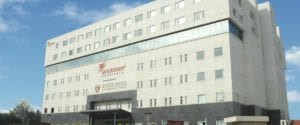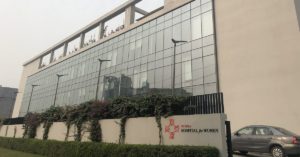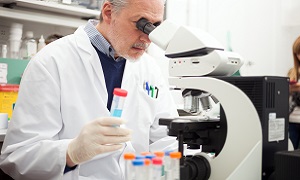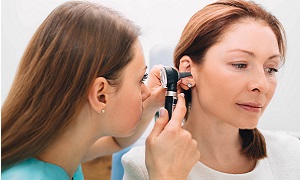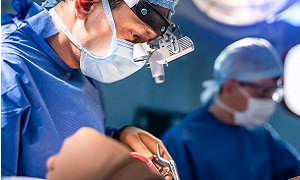Best Doctors in India for Ruptured Eardrum Treatment
Best Hospitals in India for Ruptured Eardrum Treatment
S L Raheja Hospital, Mahim, Mumbai
- City: Mumbai, India
Hospital Highlights:
- SL Raheja hospital is a 140-bed multi-specialty tertiary care hospital that is being managed by Fortis Healthcare Ltd.
- The hospital is a benchmark in healthcare and medical facilities in the neighborhood of Mahim & the western suburbs.
- L.Raheja Hospital, Mahim has one of the most effective ICU and Casualty care services.
- The hospital provides specialty medical services in Cardiology, Oncology, Neurology, Orthopedics, Mother & Child Care, and in Diabetes.
Wockhardt Hospitals, Mumbai
- City: Mumbai, India
Hospital Highlights:
- Wockhardt Hospitals were established in the year 1973, originally called First Hospitals and Heart Institute.
- Wockhardt Hospitals are super specialty health care networks in India, nurtured by Wockhardt Ltd, India’s 5th largest Pharmaceutical and Healthcare company.
- Wockhardt Hospitals is associated with Partners Harvard Medical International, an international arm of Harvard Medical School, USA.
- Wockhardt Heart Hospital performed India’s first endoscopic heart surgery.
- The hospital has a state-of-the-art infrastructure equipped with the latest technologies and modern equipment.
- It has special Centers of Excellence dedicated to the major specialties to provide hassle-free and high-quality clinical care.
Pushpawati Singhania Hospital & Research Institute, New Delhi
- City: New Delhi, India
Hospital Highlights:
- Established in 1996, Pushpawati Singhania Research Institute is one of the top hospitals in the NCR region, as well as one of the top facilities in India for gastroenterology. The hospital is one of South Asia’s first institutes in medical and surgical treatment for diseases related to digestion.
- The hospital is equipped with state-of-the art facilities coupled with the latest equipment as well as renowned consultants from various parts of India as well as other parts of the world.
W Pratiksha Hospital, Gurgaon
- City: Gurugram, India
Hospital Highlights:
- W Pratiksha Hospital, Gurugram, is one of the best hospitals in the NCR region. It is also a top hospital in India for IVF. Since its inception, the hospital has performed over 5500 successful IVFs. The hospital also specializes in gynecology.
- With over 20 years of experience in providing quality healthcare, the hospital is known as one of the most trusted and valued health providers in India.
- Equipped with world-class medical facilities and advanced technology, the hospital’s doctors and clinicians also have a track record of delivering excellent results. The hospital is also known for focusing on preventive well-being as much as on curative treatment.
- The hospital has earned the trust of its patients, by providing the best available treatments at affordable costs.
Narayana Superspeciality Hospital, Gurugram
- City: Gurugram, India
Hospital Highlights:
- Situated near DLF Cyber City, Gurugram, Narayana Superspecialty Hospital is one of the top medical facilities in the Delhi NCR region, catering to the needs of the people. Known for its commitment to quality medical care and patient service, the hospital is a state-of-the-art facility with planned and well-equipped sections, which includes a spacious OPD area as well as comfortable patient rooms.
- It is the closest super-specialty hospital from Indira Gandhi International Airport towards Gurugram, and also the nearest super specialty hospital from DLF Cyber City. It is also close to major residential areas in Gurugram.
- It is part of the renowned Narayana Health Group. Established in 2000, by Dr. Devi Shetty, a renowned cardiac surgeon, it has grown to be one fo India’s leading healthcare groups.
Sir Ganga Ram Hospital, New Delhi
- City: New Delhi, India
Hospital Highlights:
- Sir Ganga Ram Hospital, New Delhi is known to provide the latest medical procedures with the latest technology in all of its units.
- The hospital has a team of reputed doctors, nurses, and healthcare professionals that ensure that patients receive quality care at affordable costs.
- Staffed with a team of highly qualified doctors, dedicated nurses, and paramedical and non-medical staff, the hospital aims to lead in healthcare delivery, medical education, training, and research.
- As per the vision of the founder, the hospital also provides free treatment to the economically weaker sections of society.
- Sir Ganga Ram Hospital also provides training to young doctors under the Diplomate in National Board(DNB) program. The DNB program at the hospital was started in 1984 and it is known for currently running the maximum number of DNB specialties in the country. It also has the distinction of having the first bone bank in India.
CK Birla Hospital, Gurugram
- City: Gurugram, India
Hospital Highlights:
- The CK Birla Hospital in Gurugram is a NABH-accredited multi-specialty hospital.
- The hospital strives to increase the quality of healthcare by focusing on UK NHS nurse and midwife training requirements. Policies and practices derived from the National Institute for Health and Treatment Excellence (NICE) recommendations in the United Kingdom ensuring that a strong focus on safety, high-quality clinical care, and sanitation is maintained.
- The hospital’s cutting-edge technology and facilities allow for real-time communication and seamless collaboration among caregivers, ensuring accuracy and the best possible results. Those with foreign experience and accreditations make up part of the hospital’s team of clinicians.
KIMS Hospital, Hyderabad
- City: Hyderabad, India
Hospital Highlights:
- KIMS Hospital (a brand name of Krishna Institute of Medical Sciences) is one of the largest and best multi-speciality hospitals in Hyderabad. The hospital provides various treatments to an enormous number of patients.
- The hospital has a capacity of more than 3000 beds. KIMS Hospitals offers different healthcare services in more than 25 specialities and super specialities.
- The hospital is equipped with modern medical equipment and technology. It has robotic equipment to provide minimal invasive techniques for patients.
- The hospital is aimed at providing world-class healthcare facilities and services at an affordable cost for patients.
- The various specialities and departments of the hospital include neurosciences, gastroenterology & hepatology, robotic science, reproductive sciences, dental science, oncological sciences, organ transplantation, heart and lung transplantation and mother and child care.
Fortis Hospital, Shalimar Bagh
- City: New Delhi, India
Hospital Highlights:
- Fortis Hospital in Shalimar Bagh is a multi-super specialty hospital that strives to provide world-class patient care by leaving no stone unturned.
- Fortis, Shalimar Bagh, with 262 beds and a 7.34-acre footprint, provides the best level of medical care through its team of doctors, nurses, technicians, and management professionals.
Reliance Hospital, Mumbai
- City: Mumbai, India
Hospital Highlights:
- Reliance Hospital is one of the best super-specialty care hospitals in Navi Mumbai.
- The main purpose of this hospital is to become a trustworthy place for the best health and hope for society. The hospital is well connected to the suburbs of Mumbai and Navi Mumbai.
- The hospital has various specialty departments, viz., Accident & Emergency, Anesthesiology, Dental Services, Dermatology, Diabetology, Dietetics Nutrition, Endocrinology, ENT, Gastroenterology, General Surgery, Gynaecology And Obstetrics, Hepato Pancreato Biliary Surgery, Infectious Disease, Internal Medicine, Interventional Radiology, Laboratory Medicine, Minimal Access Laparoscopic Surgery, Nephrology, Neurosciences, Opthalmology, Orthopaedics, Paediatrics, Pain Management Palliative Care, Physical Medicine Rehabilitation, Plastic And Reconstructive Surgery, Psychiatry, Pulmonary Medicine, Radiology, Rheumatology, Transplant, Urology Andrology, Vascular Surgery
Ruptured Eardrum
Your eardrum is a thin tissue that separates your ear canal from the middle ear. A ruptured eardrum, which is also termed as a perforated tympanic membrane, is a hole or a tear in the eardrum.
A ruptured eardrum may lead to multiple complications such as middle ear infections and hearing loss. It might also require surgery for repairing the damage to the eardrum. However, if you protect your ear, a ruptured eardrum may heal on its own, without any treatment within a few months.
Symptoms
A ruptured eardrum might have multiple symptoms such as:
- Mucuslike, pus-filled or bloody drainage from the ear
- Ear pain that can subside quickly
- Hearing loss
- Ringing in your ear i.e. tinnitus
- Spinning sensation i.e. vertigo
- Nausea or vomiting resulting from vertigo
If you experience signs or symptoms of a ruptured eardrum, it is essential to inform your doctor. It is important to determine the cause of the symptoms as well as find out whether a ruptured eardrum has occurred.
Causes
Several causes might lead to a ruptured eardrum. Some of the most common causes leading to this condition include:
- Infection is generally the most common cause. The infection may be caused by viruses, bacteria, or fungi infecting the inner ear and/or Eustachian tube, which exerts pressure on the eardrum as well as stretches it. The eardrum may perforate, depending upon the amount of pressure that is put on it.
- Sports injuries which can include any head trauma
- Poor technique of irrigation of the ear canal for removal of earwax
- Trauma
- Other blast waves such as fireworks, gunshots, or any type of explosives
- Car accidents
- Rapid changes in the atmospheric pressure, for example, barotrauma from scuba diving or even from explosives producing a blast wave.
- Sticking a sharp object into the ear canal or even dull objects such as cotton-tipped swabs to remove earwax can also lead to this condition
- Surgical placement of tubes in the ear i.e. myringotomy.
Diagnosis
Generally, an ENT specialist will perform a diagnosis to see if you have a ruptured eardrum. Generally, he/she might use a lighted instrument which can be an otoscope or a microscope.
He/she can conduct additional tests as well for determining the cause of your symptoms or detecting the presence of any hearing loss. Some of the tests may include:
Laboratory tests
Tuning fork evaluation
Tuning forks are two-pronged, metal instruments, and they produce a sound when struck. With simple tests with these instruments, your doctor can detect hearing loss.
A tuning fork evaluation might also reveal if your hearing loss is caused by damage to the vibrating parts of your middle ear, including your eardrum, or any damage to any sensors or nerves of your inner ear, or damage to both.
Audiology exam
Treatment
In most cases, ruptured eardrums heal without any treatment within a few weeks. If there is any evidence of infection, your doctor might prescribe antibiotics. If the tear or hole in the eardrum doesn’t heal by itself, then your doctor is going to recommend treatment. Treatment can include the following:
Eardrum patch
If the tear or hole in the eardrum is not closing on its own, your ENT specialist might seal it with a paper patch, or a patch made of other material. During the procedure, your doctor might also apply chemicals to the edges of the tear, which can help the eardrum to heal itself. After this is done, he/she is going to apply a patch over the hole. This procedure might need to be repeated more than once before the holes close on their own.
Surgery
If a patch is unable to help you with proper healing or your ENT specialist determines that the tear is not likely to heal with a patch, he/ she may recommend surgery. The most common surgical procedure for a ruptured eardrum is tympanoplasty. This procedure involves your surgeon grafting a patch of your own tissue to close the hole in the eardrum. This procedure is generally done on an outpatient basis. In an outpatient procedure, generally, you are able to go home the same day unless due to medical anesthesia conditions, a longer hospital stay is required.
Complications
Your eardrum or tympanic membrane has two important functions, which includes hearing as well as protection.
The complications that can result from a ruptured eardrum include:
- Hearing loss- Hearing loss is usually temporary and lasts only until the tear or hole in your eardrum has healed fully. The size as well as the location of the tear may affect the degree of hearing loss.
- Middle ear infection- A ruptured or perforated eardrum is able to allow bacteria to enter your ear. If a perforated eardrum is not able to heal, you might become vulnerable to infections. This can lead to the occurrence of chronic drainage and hearing loss as well.
- Middle ear cyst- Although rare, this cyst, which is composed of skin cells and other debris, might develop in your middle ear as a long-term result of eardrum rupture.
Prevention
Some of the tips that you can follow in order to avoid a ruptured eardrum include getting proper treatment for middle ear infections, whenever you see signs of symptoms. You should also guard your ears against any explosive noise. Remember to keep your ears free of any foreign objects as well, and avoid digging out excess earwax using paper clips, cotton swabs, and similar items. Such items might tear or puncture the eardrum.
Avoid flying if you are having a cold or active allergy that is causing nasal or ear congestion.


